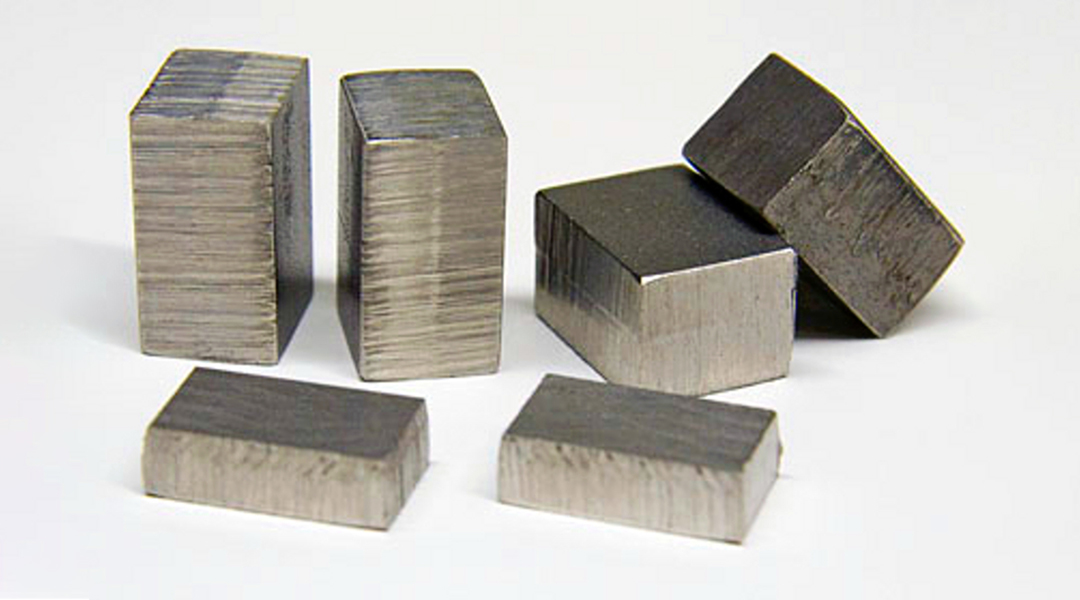It has long been known that when most materials are heated, they expand, becoming less dense. Our modern understanding of solids on a microscopic level has led scientists to determine that the higher its temperature, the more atoms vibrate within a material’s crystal lattice, exerting more pressure on their neighbors, thereby increasing the amount of space occupied by one atom.
While this rule holds for most metals, there is a class of alloys known as Invars (the term comes from “invariance”) that do not expand with increasing temperature. The original material is an alloy of iron and nickel, though other variations have been discovered.
“It’s almost unheard of to find metals that don’t expand,” says Stefan Lohaus, a graduate student in the Department of Applied Physics and Materials Science at Caltech. “But in 1895, a physicist discovered by accident that if you combine iron and nickel, each of which has positive thermal expansion, in a certain proportion, you get [the] material with very unusual behavior.”
The unique properties of Invars
Since their discovery, scientists have speculated that the unique properties of Invars are related to magnetism, since these alloys are ferromagnets or materials that respond very strongly to an external magnetic field.
Physicists suggested that for Invars, the thermal expansion caused by the increasing vibrations of atoms is compensated by a weakening of the repulsion between electrons in the bulk of the material, which are responsible for the magnetic properties.
More precisely, the intensity of interactions between electrons depends on the directions of their spins, which are the quantum analog of classical rotation. According to scientists’ hypothesis, in the case of Invar, heating leads to an arrangement of spin directions such that the electron tend to repel less strongly, making it easier for a material to contract.
To find out if this explanation of the Invar effect is correct, a team of scientists led by Brent Fultz, the Barbara and Stanley R. Rawn, Jr., Professor of Materials Science and Applied Physics at Caltech, studied a sample of a nickel-iron alloy using the Advanced Photon Source, a source of synchrotron X-rays at the Argonne National Laboratory in Illinois.
“We decided to look at that because we have this very neat experimental setup that can measure both magnetism and atomic vibrations,” says Lohaus, lead author of the study published in Nature Physics, in a press release. “It was a perfect system for this.”
Solving a hundred-year-old problem
In their experiment, the researchers squeezed a small piece of Invar between the tips of two diamond needles, the pressure between which could be regulated over a range of up to several hundred thousand atmospheres. This sample was then irradiated with intense X-rays, whose properties after passing through the material depend both on the intensity of atomic vibrations and on the directions of electron spins.
Upon analyzing the results of the X-ray analysis of the sample, the scientists came to the conclusion that the previously proposed explanation for the lack of expansion of Invars due to heating was correct — the effects caused by lattice vibrations and changes in the direction of electron spins do cancel each other as long as the ambient pressure is not too large; that is, not exceeding three hundred thousand atmospheres.
“This is exciting because this has been a problem in science for over a hundred years or so,” Lohaus concluded. “There are literally thousands of publications trying to show how magnetism causes contraction, but there was no holistic explanation of the Invar effect.”
These findings are important not only for fundamental science, but for potential applications in industry. The fact that the previously proposed theory of the Invar effect turned out to be correct means that it can be used for a theoretical search of other similar alloys, not necessarily consisting of just iron and nickel.
These can be very important for manufacturing equipment that requires extreme precision, such as clocks, telescopes, and other fine instruments in which the thermal expansion of the components would hinder accuracy.
Reference: S. H. Lohaus et al, A thermodynamic explanation of the Invar effect, Nature Physics (2023), DOI: 10.1038/s41567-023-02142-z
Feature image credit: U.S. Research center

















